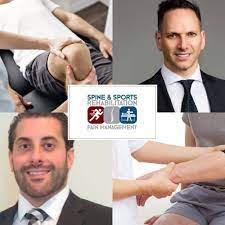Engaging in any of the sports mentioned above is an essential element of an active lifestyle. It is beneficial for your heart, and good for the respiratory system. Beneficial to building and maintaining muscular strength and endurance, etc. Dr. Jordan Sudberg explains In an ideal world, only positive results would be derived from engaging in sports, but obviously, it’s not the case. People make mistakes when they move in certain ways, people slip and fall.
Dr. Jordan Sudberg said the risk of injury shouldn’t hinder you from participating in activities, but by becoming aware of the most frequent injuries in sports and injuries. You can take measures to avoid them or at the very least decrease the chance of being injured. Let’s take a look at eight potential injuries that are caused by athletics and the preventative measures you can adopt.
Table of Contents
Strains
All of the moving parts are vulnerable to stretching further. Then they need to or even move in ways that they shouldn’t and causing them to become injured and hurting. Common muscle strains can include pulled muscles in the groin, pulled hamstrings, and quads that are strained. The majority of injuries are minor and can heal with rest. The best method to minimize the chance of straining muscles and tendon injuries is to warm up and stretch before engaging in vigorous activity.
Sprains
The ligaments that are strained by sprains have the same effect as is a strain on muscles. Ligaments are the connective tissues that join bones. If these ligaments are turned in an incorrect direction they could be pulled or torn. Ankle sprains are among the most frequently-reported kind of sprain for athletes, closely followed by wrist and elbow injuries, and others.
Warmups and stretches before your workout will help prevent sprains and also ensure you’re practicing proper techniques for the sport you’re participating in. The ligament is often left weak and prone to future strains, so if have a history of straining an ankle or knee for instance it’s ideal to strengthen your joint with braces while playing.
Knee injuries to the knee
Knees are complex joints and are subject to a lot of force and wear throughout most sporting activities. It’s that reason we’ve assigned it a category of its own for injuries that could occur. The ACL (ACL) is fairly frequent as are cartilage tears as well as dislocations and fractures.
Injuries to the knee can be debilitating and painful and sometimes require surgery to correct the problem. Warm-ups, stretching and proper posture can help reduce the chance of injury to the knees and can be prevented by appropriate cushioning and bracing (for example, when playing contact sports).
Fractures
Fractures pose a danger with all strenuous or contact sports. However, you can lessen the chance of suffering from them by wearing appropriate padding while practicing warm-ups.
Working out to ensure your muscles are robust and flexible, practicing the correct technique, etc. Don’t “play through the pain,” because sometimes pain could be an indication of an injury or strain that if not treated can leave the bone more susceptible to fracture.
Tennis elbow
Tennis elbow is among many “injuries of repetition”. That is a straining of the ligaments around the elbow from repeated use and overuse. The best method to prevent it is to be cautious. Make breaks, perform other things, and get warm and stretch before playing.
Splints for plantar fasciitis or shins
We’ve also grouped them as repetitive injuries because they’re both caused by excessive activity of legs and feet, along with inadequate support. Plantar fasciitis refers to an inflammation of a tendon within an arch in the feet. This causes painful and intense pain each time you walk.
They are both common among runners and joggers, soccer players, and basketball players. A good stretch and a rest are the two most effective prevention strategies.
Back injuries/back pain
The back and the spinal column are subject to some degree of strain during almost every sporting activity. As time passes, this strain could cause an inflammation of the vertebrae and back muscles, which can result in disc injuries, and, more often, cause upper and lower back discomfort.
A sudden impact could result in an injury that is severe on the spine. Back treatment options vary widely based on the severity of the injury and can range from physical therapy to rest to surgery. The best method to lower the risk of back injuries and pain is to maintain your back muscles’ strength and flexibility by engaging in regular exercises that are low impact as well as warm-ups, and a healthy diet.
Concussion
Common in contact sports such as football, concussions occurs when a sudden blow on one’s head can cause the brain to move within the skull. Often harming the tissues that hold it in the position. Concussions are mild or severe, with symptoms that range from dizziness and headaches to insomnia and temporary losing consciousness.
Always seek medical attention from a specialist in the spine and brain after any head injury since more serious symptoms can develop in the aftermath. Don’t continue playing sports if you feel that symptoms of concussions are evident. Concussions typically heal and can be treated with rest for up or two. The best method to lower the chance of suffering a concussion is to wear protective headgear during contact sports such as football or hockey and also when biking or skating, for instance.

